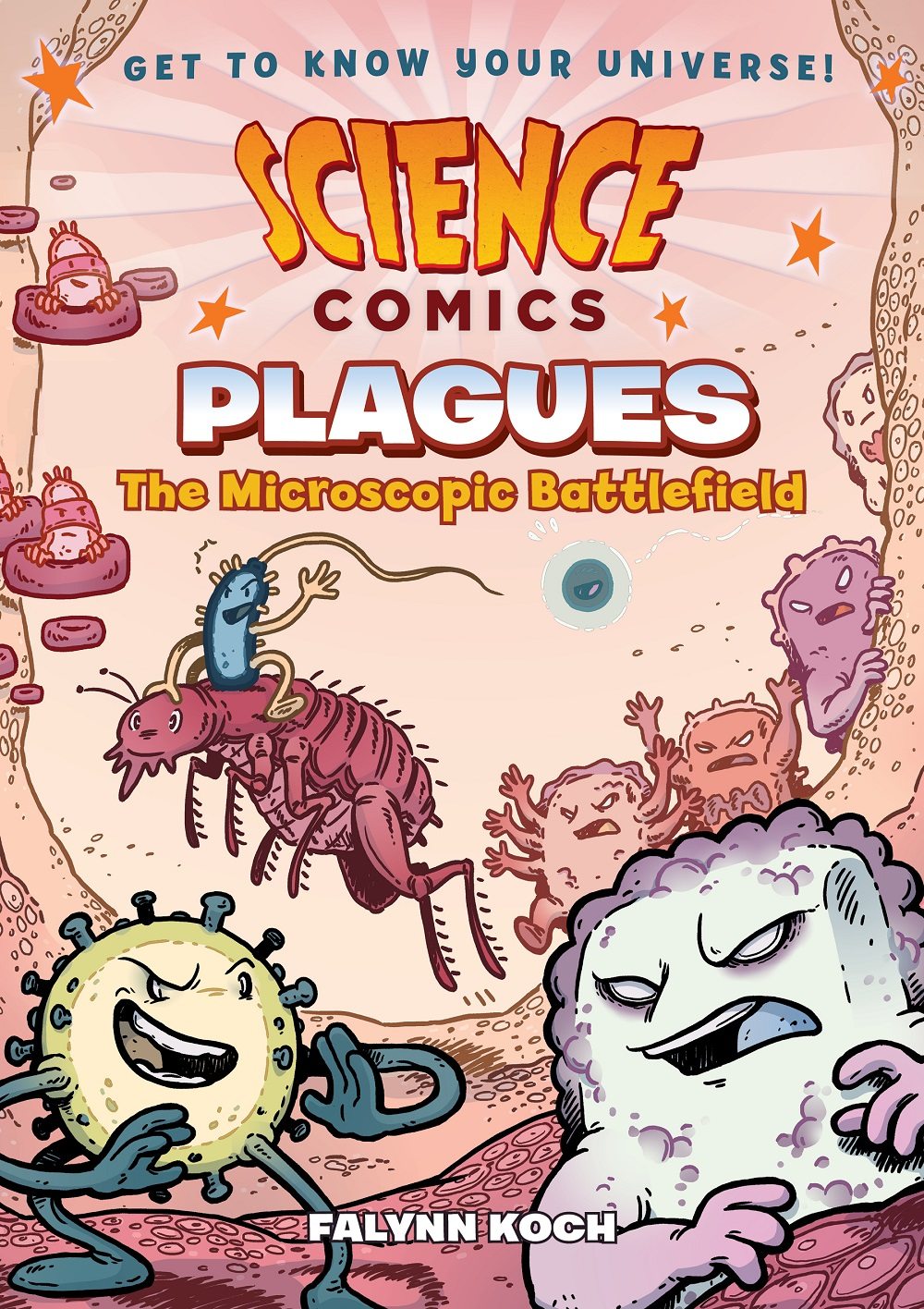
It’s no secret that we here at GeekDad HQ are big fans of First Second Books. Their graphic novels are consistently some of the best books on the market. And with the addition of the Science Comics “brand” this year, they’ve taken it to a whole new geeky level. The first couple books in the series covered dinosaurs and coral reefs, and soon we’ll have books devoted to volcanoes and bats. Each has been phenomenal… and educational… and fun!
Next up for the series is a book about plagues. Yep, plagues. In the newest book, Plagues: The Microscopic Battlefield, we get to know the critters behind history’s worst diseases. We delve into the biology and mechanisms of infections, diseases, and immunity, and we also see the incredible effect that technology and medical science have had on humanity’s ability to contain and treat disease.
Down below, we’re thrilled to share the exclusive cover reveal for the book, which is set to be released next year.
But first, we caught up with the author and illustrator, Falynn Koch (also creator of Science Comics: Bats) and got her to share eight little-known facts about plagues. Prepare yourself. A couple are not for the squeamish.
- The first man to document seeing bacteria under a microscope, Antoine van Leeuwenhoek, was not originally a scientist but a tradesman looking to see textile fibers more closely.
- One theory why the bubonic plague (or Black Death) may have ended was from a colder global temperature shift that caused the plague and fleas to stop spreading.
- It’s guessed that all of the bacteria living on and inside the average human body combined could account for as much as 4 pounds of our weight.
- Sweat produced by our bodies is originally odorless, but bacteria on the skin ingests the sweat and produces bad-smelling secretions.
- Virus comes from the Latin word for “poison” or “slimy liquid,” loosely in regards to snake venom.
- Computer keyboards and cell phones tend to have more bacteria on them than toilet seats.
- Babies in the womb have no bacteria on them, though that instantly changes as soon as they are born.
- One of the best ways to get rid of ticks that spread Lyme disease in North America is the possum! Possums eat any tick that lands on them but cannot contract the disease.



